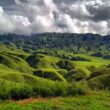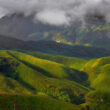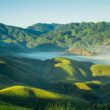Located in Southwest Alaska, Katmai National Park is a wild and remote paradise. The park’s diverse landscape, which includes glaciers, mountains, lakes, and rivers, provides a natural habitat for various species of wildlife, such as brown bears, caribou, moose, wolves, and salmon.
In this comprehensive guide, we will explore the natural wonders of Katmai National Park, including its history, geography, wildlife, and attractions. Whether you are planning a family vacation, a wildlife photography adventure, or a solo backpacking trip, this guide will help you plan your trip to one of America’s most beautiful national parks.
History
Katmai National Park is named after Mount Katmai, a stratovolcano that erupted on June 6, 1912, and buried the valley below with ash and pumice. The eruption also caused the nearby Novarupta volcano to erupt, creating one of the most significant volcanic events of the 20th century.
The park was established in 1918 as a national monument to protect the area’s wildlife and the remains of the 1912 volcanic eruption. The monument was later expanded in 1980 to its current size of 4.1 million acres, making it one of the largest national parks in the United States.
Geography
Katmai National Park is located in the Aleutian Range of Alaska, a volcanic mountain range that stretches over 600 miles from the Alaska Peninsula to the Aleutian Islands. The park’s landscape is dominated by the Brooks Range, a massive mountain range that reaches heights of up to 9,000 feet.
The park is home to several active volcanoes, including Mount Katmai and Novarupta. The ash and pumice from the 1912 eruption covered the entire valley, forming what is now known as the Valley of Ten Thousand Smokes, a vast ash-filled canyon that stretches over 40 miles.
The park is also home to several glaciers, including the largest in the park, the Naknek Glacier, which stretches over 12 miles. The glaciers provide a vital source of water for the park’s rivers, which are home to various species of fish, such as salmon, trout, and grayling.
Wildlife
Katmai National Park is known for its abundant wildlife, especially its brown bears. The park is home to over 2,000 brown bears, making it one of the most significant brown bear populations in the world. The bears are most commonly seen in the Brooks River area, where they congregate to catch salmon during the summer months.
Other wildlife species found in the park include caribou, moose, wolves, foxes, lynx, and wolverines. The park’s rivers and lakes are home to various species of fish, such as salmon, trout, and grayling, as well as other aquatic species, such as beavers and otters.
Attractions
Katmai National Park offers visitors a range of attractions and activities, from bear viewing and fishing to hiking and camping. Here are some of the most popular attractions in the park:
- Brooks River: Brooks River is one of the best places to view brown bears in their natural habitat. Visitors can watch the bears catch salmon in the river from the safety of an elevated viewing platform.
- Valley of Ten Thousand Smokes: The Valley of Ten Thousand Smokes is a must-see attraction in the park. Visitors can hike through the ash-filled canyon and see the remnants of the 1912 volcanic eruption.
- Naknek Lake: Naknek Lake is the largest lake in the park and is a popular spot for fishing and boating. The lake is home to several species of fish, such as salmon.
- Katmai Coast: The Katmai Coast is a remote and pristine area of the park that offers visitors a chance to explore the park’s rugged coastline. Visitors can take a guided boat tour to see wildlife such as sea otters, seals, and whales.
- Brooks Camp Visitor Center: The Brooks Camp Visitor Center is the main visitor center in the park and offers exhibits, videos, and ranger-led programs about the park’s history, geography, and wildlife.
- Hiking and Camping: Katmai National Park has over 30 established hiking trails that range from easy to strenuous. Visitors can explore the park’s diverse landscape on foot and camp in one of the park’s six designated campgrounds.
The best time to visit Katmai National Park depends on what you want to see and do. The park is open year-round, but the best time for bear viewing is during the summer months from June to September when the bears are most active and visible. During this time, the weather is also warmer and more conducive to outdoor activities.
The spring and fall months are also good times to visit the park, as the crowds are smaller, and the weather is cooler. However, the park’s facilities are limited during this time, and some of the hiking trails may be closed due to snow and ice.
Winter is a beautiful time to visit the park, but it is also the most challenging. The park’s facilities are closed during the winter months, and visitors must be self-sufficient and prepared for extreme weather conditions.
Getting There
Katmai National Park is located in a remote and rugged area of Alaska and is not accessible by road. The park can only be reached by plane or boat. The park’s main entrance is located in King Salmon, a small town on the Alaska Peninsula. Visitors can fly into King Salmon from Anchorage or take a commercial or chartered boat from Homer or Kodiak.
Once in King Salmon, visitors can take a scheduled flight or chartered plane to the park’s Brooks Camp. Visitors can also take a guided boat tour to the park’s remote coastal areas.
Katmai National Park offers visitors a range of accommodations, from rustic cabins to tent camping. Here are some of the most popular options:
- Brooks Lodge: Brooks Lodge is the park’s only full-service lodge and offers comfortable accommodations and meals. The lodge is located on the banks of the Brooks River and is a popular spot for bear viewing.
- Campgrounds: The park has six established campgrounds that offer primitive camping facilities, including tent pads, fire pits, and outhouses. Reservations are recommended during the summer months.
- Rustic Cabins: The park has several rustic cabins available for rent that offer a more secluded and private camping experience. The cabins are equipped with basic amenities, such as beds, a stove, and a propane heater.
Conclusion
Katmai National Park is a beautiful and remote wilderness area that offers visitors a chance to explore some of the most stunning natural landscapes in Alaska. From bear viewing and fishing to hiking and camping, the park offers a range of attractions and activities that are sure to appeal to outdoor enthusiasts.
Whether you are planning a family vacation, a wildlife photography adventure, or a solo backpacking trip, Katmai National Park has something for everyone. So, pack your bags, grab your camera, and head out to explore one of America’s most beautiful national parks.
similar Articles
Frequently Asked Questions About Katmai National Park
- What is Katmai National Park known for?
Katmai National Park is known for its abundant wildlife, including brown bears, salmon, and various bird species. The park is also known for its scenic landscapes, including the Brooks River and Valley, the Valley of Ten Thousand Smokes, and the rugged coastline.
- What is the best time to visit Katmai National Park?
The best time to visit Katmai National Park is during the summer months from June to September when the bears are most active and visible. During this time, the weather is also warmer and more conducive to outdoor activities. The spring and fall months are also good times to visit the park, as the crowds are smaller, and the weather is cooler.
- How do I get to Katmai National Park?
Katmai National Park is located in a remote area of Alaska and is not accessible by road. The park can only be reached by plane or boat. Visitors can fly into King Salmon from Anchorage or take a commercial or chartered boat from Homer or Kodiak. Once in King Salmon, visitors can take a scheduled flight or chartered plane to the park’s Brooks Camp.
- What is the best way to see bears in Katmai National Park?
The best way to see bears in Katmai National Park is to visit the Brooks Camp area during the summer months. The Brooks River is a popular spot for bear viewing, and visitors can watch the bears catching salmon in the river from viewing platforms. Visitors can also take guided bear-viewing tours to other areas of the park.
- Is it safe to visit Katmai National Park?
Katmai National Park is a remote and rugged wilderness area, and visitors should take precautions to ensure their safety. Visitors should always follow park regulations and guidelines, stay alert for wildlife, and be prepared for changing weather conditions. Visitors should also take steps to minimize their impact on the environment and wildlife.
- Are there hiking trails in Katmai National Park?
Yes, Katmai National Park has over 30 established hiking trails that range from easy to strenuous. The trails offer visitors a chance to explore the park’s diverse landscapes, including the Brooks River and Valley, the Valley of Ten Thousand Smokes, and the park’s rugged coastline.
- Can I fish in Katmai National Park?
Yes, fishing is allowed in Katmai National Park, and the park is known for its excellent salmon fishing. Visitors must obtain a fishing license and follow all park regulations and guidelines.
- What should I pack for a trip to Katmai National Park?
Visitors should pack for changing weather conditions, as the weather in the park can be unpredictable. Visitors should also pack appropriate clothing and gear for outdoor activities, including hiking, fishing, and bear viewing. Visitors should also pack food, water, and other essential supplies, as the park is remote and facilities are limited.
- Can I bring my pet to Katmai National Park?
No, pets are not allowed in Katmai Park, except for service animals. Visitors should leave their pets at home or make arrangements to board them outside the park.
- Are there accommodations in Katmai National Park?
Yes, Katmai Park offers visitors a range of accommodations, including rustic cabins, tent camping, and the Brooks Lodge, the park’s only full-service lodge. Reservations are recommended, especially during the summer months when the park is most crowded.









